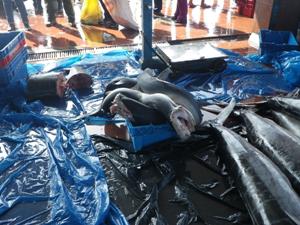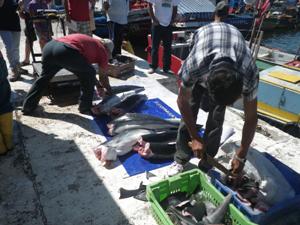Social media video featuring the project.
The sharks of Peru in numbers
18 Mar 2011 Costa Rica, Central and Latin America Fishes
The aim of the project is to support conservation and sustainable management of shark fisheries by incorporating important population genetic information.

Sharks are globally threatened as a result of unsustainable fishing practices and bycatch. Currently, there is a growing interest in the management of shark fisheries but there are important gaps in knowledge that hinder decision-making at government level. Needed are estimates of the population size, effective population size, geographic structure of populations, and genetic diversity. These estimates are missing for most of the species that are currently commercially exploited but are fundamental for the long-term sustainable management of populations aiming to maintain viable populations, their ecological role within the ecosystem and the ability to respond to climate change.

The commercial fisheries of sharks, rays and chimeras have increased since 1980's. In the East Pacific Ocean around 20 species of sharks are targeted. The most common sharks caught are pelagic shark species. These are the blue shark (Prionace glauca), the mako shark (Isurus oxyrinchus) and the silky shark (Carcharhinus falciformis). Studies suggest these are the three most fished pelagic shark species in the Pacific Ocean. All of them are now listed in the IUCN Red Data Book either as near threatened or vulnerable.
I will conduct a genetic study on shark fisheries in the East Pacific to estimate values of genetic diversity, to identify local and regional stocks and to obtain the first estimates of effective population size for three species of sharks, silky, short-fin mako and blue shark in Chile, Peru and Costa Rica. This information is necessary to begin understanding the impact of fisheries on shark’s populations and to implement sustainable management programs that consider the genetic monitoring of shark fisheries for the conservation and long-term viability of their populations and marine ecosystems.
Social media video featuring the project.
The sharks of Peru in numbers